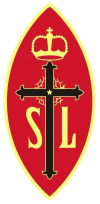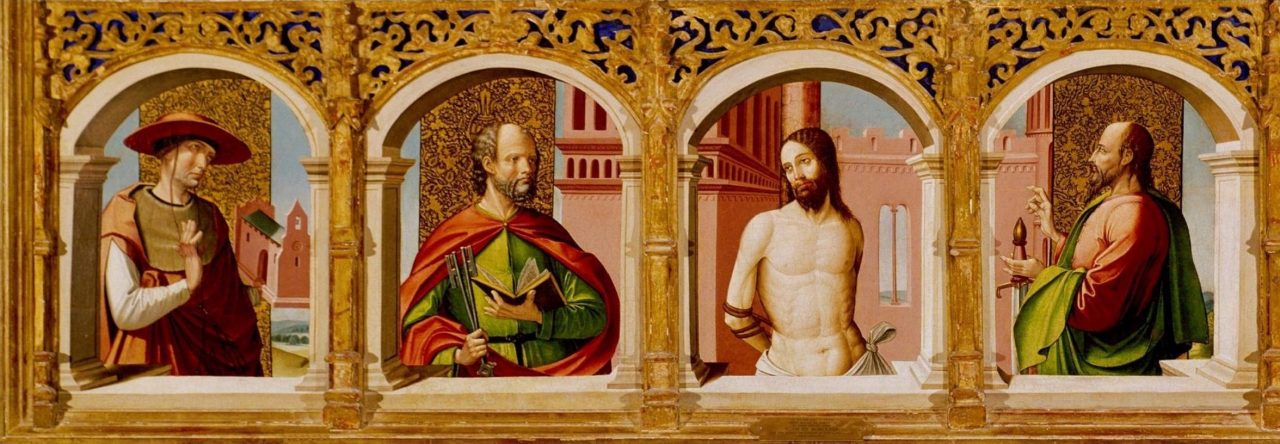STATUTES OF THE SOVEREIGN, KNIGHTLY AND NOBLE ORDER OF THE LION AND THE BLACK CROSS (OLBC)
(L’Ordre Souverain, Chevaleresque, et Noble du Lion et de Croix Noire (OLCN))
1. The Order of the Lion and Black Cross is conferred by the Prince-Abbot of the Abbey- Principality of San Luigi, in accordance with its institution on 15 October 1883 by Prince-Abbot Henrice, who became the first Grand Master of the Order.
2. The dignity of Grand Master is attached to the Office of Prince-Abbot of San Luigi, whose right it is to appoint His Successor, in consultation with the Chapter-General if he so desires.
3. The Spiritual Patrons of the Order are St Mark and St Louis.
4. The Order has since 1960 been under the High Protection of Crown Prince Akihito, now H.I.M. the Emperor Emeritus of Japan.
In 2012, the Order appointed as a Royal Patron His Majesty Rukirabasaija Agutamba Solomon Gafabusa Iguru I., by The Grace of God, Omukama of The Kingdom of Bunyoro-Kitara, Ruler of Hoima, Masindi, Kibaale, Buliisa and Kiryandongo, The Grandson of Kabalega, The Healer, The Orphan Protector, The Hater of Rebellion, The Lion of Bunyoro, The Hero of Bunyoro, The Hero of Kabalega, etc. etc. etc. – 49th Omukama of The Kingdom of Bunyoro-Kitara, 27th Omukama in The Babiito Dynasty, The Sovereign Head of The Royal Order of Omujwaara Kondo and The Royal Order of Engabu and The Sovereign Head, Grand Master and Protector of The Most Honourable Order of Omukama Chwa II. Kabalega etc. etc. etc.; according to Royal Bulletin 026-RB-KBK-2012. This Royal Patronage reflects the memory of His Majesty Omukama Chwa II. Kabalega, who received the third Prince-Abbot and Prince Grand Master of the said Order, Dom José Mendoza (José II), and the community of the Abbey of San Luigi in 1885 and granted them His Royal Protection.
5. The Order maintains its international Secretariat in the United Kingdom.
AIMS OF THE ORDER
6. The chief Aims of the Order are (1) to unite together those who accept the ancient standards of Chivalry; (2) to help forward any charitable works under the Patronage of the Order; (3) to reward those who have distinguished themselves in the service of mankind or of the San Luigi Orders, without distinction as to race or creed.
7. The Order seeks to encourage in its members a spirit of active charity and service. In contrast to the Order of the Crown of Thorns, which is open to Christians only, it is open to members of all religions as well as those who do not profess any religious belief.
DIGNITIES OF THE ORDER
8. The Order confers the following Dignities upon those admitted to its membership, in ascending rank. with the French and English post nominals shown:
a) Companion/Compagnon (French CompLCN, English CompLBC)
b) Knight/Dame/Chevalier (French CLCN/DLCN, English KLBC/DLBC)
c) Knight/Dame Officer/Chevalier Officier (French OLCN, English KOLBC/DOLBC)
d) Knight/Dame Commander/Chevalier Commandeur (French CCLCN/DCLCN, English KCLBC/DCLBC)
e) Knight/Dame Grand Cross/Chevalier Grande Croix (French GCLCN, English GCLBC)
The Collar of the Order is its supreme accolade and is conferred rarely, principally upon Heads of State and Heads of Royal Houses.
9. Those admitted to the rank of Knight/Dame and above are entitled to use the prenominal Chevalier (or Dame) (except if clergy) and to append to their names the appropriate post nominals. At the discretion of the Grand Master, membership of the Order may be granted on a hereditary basis with remainder to the senior male-line descendant of the holder.
10. The Order may grant various other titles under certain conditions.
CHARACTER OF THE ORDER
11. The Order is International in character, and is represented in various countries by Dignitaries whose duty it is to propose those persons who desire admittance to the Order, and to be responsible for the organisation of the Order in their respective territories.
CONDITIONS OF ADMISSION
12. Candidates, without distinction as to race or sex, must provide the following documents and information:
a) A request for admission addressed to the Grand Master, which may be made directly only if the country in which the candidate lives does not have an Official Representative.
b) A full biography including date of birth, religious affiliations if any, address, profession, honours received, academic or otherwise (with copies of certificates and diplomas of award); services rendered; Honour desired and the reason why this Honour is sought, together with all information possible as to social qualifications for the same; the names of at least three references of whom inquiry may be made. A small photograph should be enclosed.
c) Members may be either Christians, members of non-Christian faiths, or persons without any religious belief.
13. The Grand Master, either directly or through His Representatives, makes inquiry into each application, and later renders His decision; which, whether favourable or unfavourable, is final and not subject to question. If unfavourable, such decision is not to be interpreted as being in any way a reflection upon the candidate.
14. The Grand Master has the right to grant admission to the Order to anyone of His Own choice, without necessarily requiring the complete fulfilment of these Regulations. As He confers all the Offices and Dignities granted within the Order, so He may revoke them without having to give any reasons for His decision.
DUTIES OF MEMBERS
15. Members of the Order are expected to propagate the Order and its interests by every proper means in their power. They are required to maintain contact with the Grand Master or His Representatives, and to advise promptly of any change of address. They are required also to avoid all political entanglements or discussions in their capacity as members, whether collectively or singly.
16. On 1 January each year, members are liable for an annual Oblation in amount as may be fixed from time to time. Serving clergy and others who are on limited incomes may be exempted from this obligation at the discretion of the Grand Master. Members who do not meet this obligation, not having been exempted, will be considered inactive and may not use the designations of the Order or wear its Insignia, nor attend its meetings, until such time as they have discharged their liabilities. The payment of Oblations is to be administered according to the strict instructions of the Grand Master and no third party not authorized by him may collect Oblations from members.
17. In the general course of events an annual Investiture of the San Luigi Orders will normally be scheduled at which new members may be formally invested by the Grand Master. In addition, such occasions will normally include a collection to be applied to those worthwhile and charitable causes supported by the San Luigi Orders. Additional meetings will be held as circumstances warrant.
INSIGNIA OF THE ORDER

1883 depiction
 Modern illustration
Modern illustration
18. The Cross (Star) of the Order is historically described as a Black Maltese Cross. In the modern era this has been replaced by a modified cross pattée similar to the current Coptic cross, outlined in gold, with a rampant Lion in gold in the centre upon a roundel of red. The ribbon is black with narrow gold edges.
19. The Seal consists of the insignia surrounded by the legend “Chevalerie du Lion et de Croix Noire” and the date 1883.
20. The manner of wearing the Cross, and any other Regalia ordered by authority, depends upon the Rank of the member.
UNIFORM OF THE ORDER
21. All members of said Order, and others having connexion with the Principality with permission from the Grand Master, may wear the authorized uniform of the Principality which is as set out in the appropriate Protocol.
22. Members are responsible for the purchase of uniforms and insignia from the Order’s approved suppliers and for all costs incurred in so doing.
Approved this twenty-sixth day of January in the year of Our Lord two thousand and twelve and revised this first day of May in the year of Our Lord two thousand and twenty-three:
++EDMOND P
Prince-Abbot of San Luigi
Mukungu of the Chieftainship of the Ancient Abbey-Principality of San Luigi (Fezzan)
Grand Master of the San Luigi Orders


You must be logged in to post a comment.